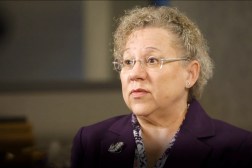San Francisco replaces ‘beast’ of tax mainframe with cloud-based solution

San Francisco’s tax office last week replaced its 50-year-old “beast” of a mainframe system with a cloud-based software, successfully navigating the “huge challenge” of modernizing in a global pandemic, city treasurer Jose Cisneros said.
The city replaced its legacy system with a billing and collection system called TaxSys, in just 18 months. According to the software’s publisher, Grant Street, San Francisco’s installation timeline was six months quicker than that of its other public-sector customers, including neighboring San Mateo County.
The TaxSys platform will allow Cisneros and his team to visualize data on dashboards, customize reports and applications for city agencies and distribute tax documents widely and rapidly — all of which weren’t possible on the beloved, but ancient, legacy system.
“The mainframe … was highly reliable,” he said “You just turn that beast on and it goes.”
San Francisco, like thousands of cities across the country, is facing a budget deficit as the coronavirus pandemic has dried up tax revenues with many businesses shuttered and tax collection deadlines extended. Cisneros said the city extended tax due dates to help businesses recover from the economic impact of the virus, but the city’s technological limitations were making it difficult to assist residents.
“We have this incredibly precipitous and dramatic decrease in revenues while at the same time having to step up and provide, in many cases, even more services in many areas than before to provide support to our own residents,” Cisneros said.
Even though the legacy mainframe was reliable, it was cumbersome, Cisneros said, and slow when customizing or changing anything, like tax deadlines, or integrating new data sources.
“Changes, modifications and things like that can be slow,” Cisneros said. “They take a lot of time and you have to reinvent the wheel, so to speak, whenever there’s a change in the law or you want to put some sort of different report in place.”
But switching to modern technology almost always produces “a win” for city operations, he said. Dedicating 50 city staff to replacing the legacy system over the last year-and-a-half was difficult, Cisneros said, but he believes the benefits are only just starting to pay out.
“We’re just beginning to be able to see what kind of increased options it can offer us,” he said. “This journey is far from over.”






